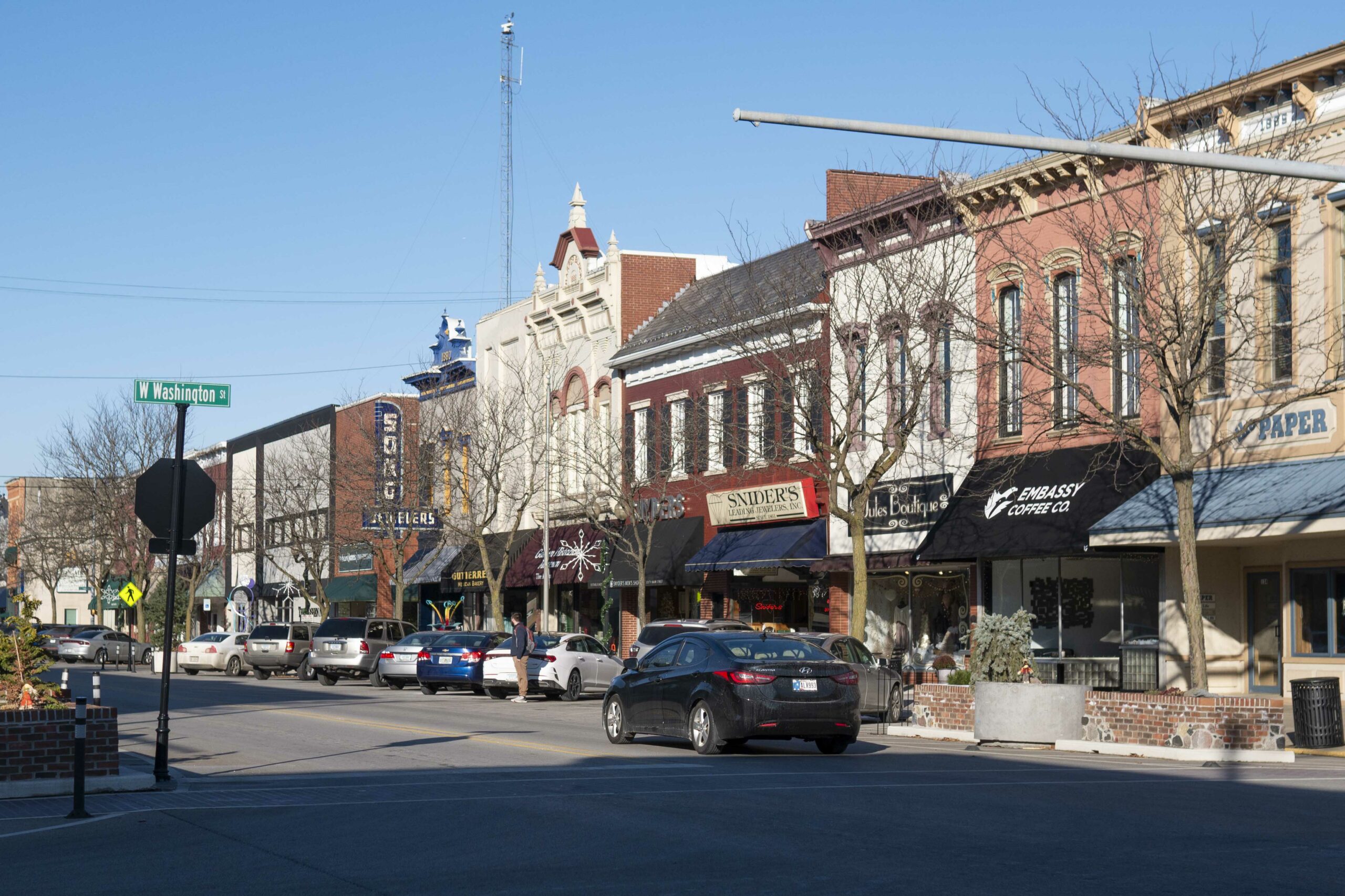In 2000, when I moved from New Jersey to Goshen to begin teaching in the communication department at Goshen College, I remember being worried about the downtown. Even with a few anchor stores, Main Street looked tired, a place in search of shoppers. Where could I find Indian, Japanese or varieties of international cuisine? Where could I browse a bookstore for a new novel? Why was it so easy to find a parking space?
Over the next two decades, as I went from being an assistant to an associate to a full professor, I was continually amazed by the transformation of the downtown. Restaurants like Venturi’s arrived. Bookstores (Better World Books, and then Fables) moved in. The Goshen Farmers Market became a community gathering place on Saturday mornings, always with a line circling inside Rachel’s Bread for breakfast.Dave Pottinger and Faye Peterson, and their daughter Maija and son-in-law Jeremy Stutsman, who would go on to serve two terms as mayor, helped to lead the revitalization by example, buying and renovating many buildings in the heart of downtown, treating facades as canvases. The launch of First Fridays – led by the current mayor, Gina Leichty – brought out thousands of people to watch the making of ice sculptures and the cruising of classic cars.
Far from Main Street, the community was advancing in other significant ways. The U.S. Department of Education formally designated Goshen College a Hispanic-Serving Institution earlier this year. This means that for consecutive years the college has met the criteria of at least 25% of its full-time undergraduate students identifying as Hispanic/Latinx. Fifteen years ago, only 2% of undergraduate students identified as Hispanic/Latinx, compared to 30% last spring. The Goshen public schools reflect a similar surge.
As someone who worked in and now teaches journalism, I’m most comfortable keeping a personal distance from local politics, believing the less said the better. In this context, though, I would like to express appreciation for the civility of mayors (a position held by a Democrat) and City Council members (Republicans hold a 4-3 majority). At the November council meeting, coming on the heels of citywide elections, representatives from both parties showed respect and goodwill for all their colleagues, regardless of party affiliation. We shouldn’t take this cooperation for the public good for granted.
During the council meeting, there’s a time when residents of the city can speak to elected representatives, in what’s formally known as “privilege of the floor.” At that November meeting, Glenn Null, a resident who faithfully attends the meetings, asked pointed questions about an ordinance on open burning that was up for a vote. Null is surely not alone in seeing that the city has room for improvement and needs to be held to account. I’m still not a fan of the backing up blindly that drivers sometimes need to do with angled parking on Main Street.
And in that spirit, of recognizing what is working well and paying attention to areas for improvement, students in the Writing for Media class selected stories to cover for this special report, “How to Build a Better College Town: Politics Included.” By the way, when I drove downtown to do some shopping earlier this month, I had to drive several blocks on Main Street before I found a parking space. But that’s a good problem.



